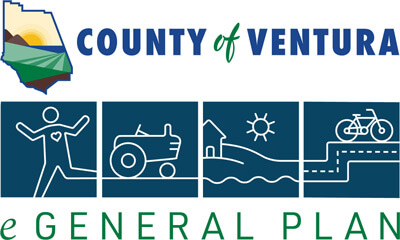
Agriculture
Ventura County’s temperate climate with warm, wet winters and hot, dry summers coupled with fertile soils, supports the cultivation of a diversity of agricultural commodities, including strawberries, celery, lemons, raspberries, avocados, nursery stock, tomatoes, peppers, cut flowers, cabbage, and kale. According to the State of California, Ventura County ranked eighth among California counties in total crop value in 2017 based on data from the County Agricultural Commissioner/Sealer’s Annual Crop and Livestock Report.
The areas that sustain agricultural commodity growth have a broad range of characteristics. For example, berry production requires a temperate moist climate, so most strawberry production is found close to the coast, surrounding the cities of Ventura, Oxnard, Camarillo, and Port Hueneme. The climate tends to be dryer and warmer further from the coast, favoring citrus crops. Specifically, the Highway 126 and 150 corridors are prime areas for citrus growth. The fertile soil combined with ideal temperate seasonal temperatures allow lemons, oranges, and mandarins to thrive. Some commodity types, such as avocados, can grow in a variety of climate regions, allowing them to flourish countywide.
The 2017 Crop and Livestock Report indicates that much of the county’s agricultural production occurred on 95,850 acres of irrigated cropland out of a total farmed acreage of approximately 294,000 acres. Of the total farmed acreage, approximately 198,000 acres are considered rangeland.
As with other agricultural regions in California, organic farming is an expanding economic growth opportunity. In Ventura County, organic farms specialize in vegetables and herbs, fruits and nuts, field and seed crops, and cut flowers and nursery production.
Farmworker and Farm Family Housing
A sustainable labor force is central to success of the county’s agricultural sector, and access to affordable housing is a key factor. Housing is becoming even more important as the county’s agriculture shifts to more labor-intensive crops and more of the farm/ranch labor in the county works year-round. Goals, policies, and implementation programs related to farmworker and farm family housing are included in Chapter 3, Housing Element.
Agricultural Economics
Goals, policies, and implementation programs related to agricultural economics are in Chapter 10, Economic Vitality Element.
